nial
Member
On the final day of CEDEC 2025, one of Japan's largest technology conferences, on July 24, 2025, Hironori Yatoku, lead game designer of Sony Interactive Entertainment's PlayStation Studios Team ASOBI, took the stage to explain the level design of "Astro Bot".
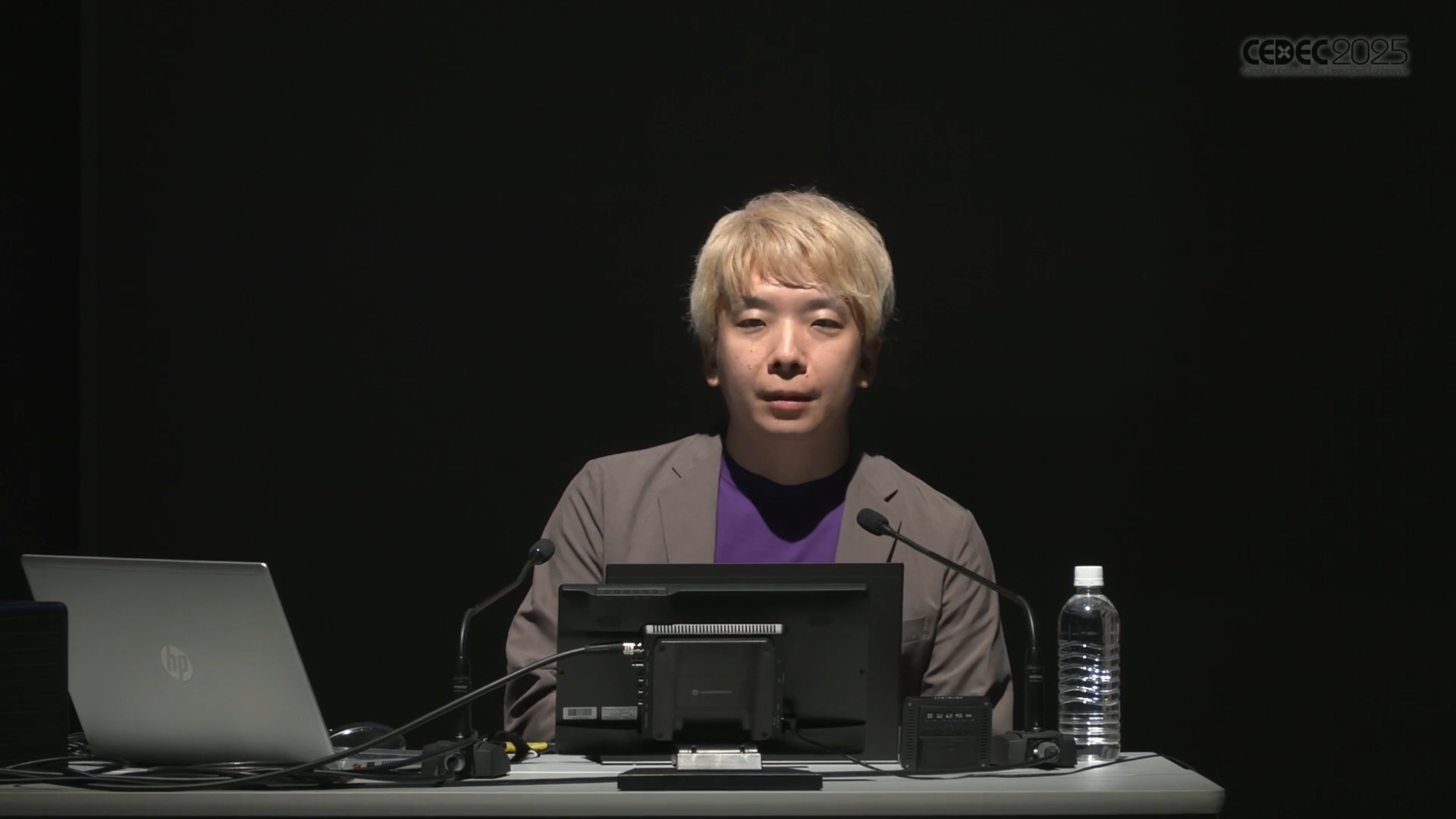
Released in 2024, Astro Bot for PS5 is an action game designed to satisfy everyone, from beginners to veteran players who have been playing games for many years. In the session, the concept and know-how of level design were conveyed.
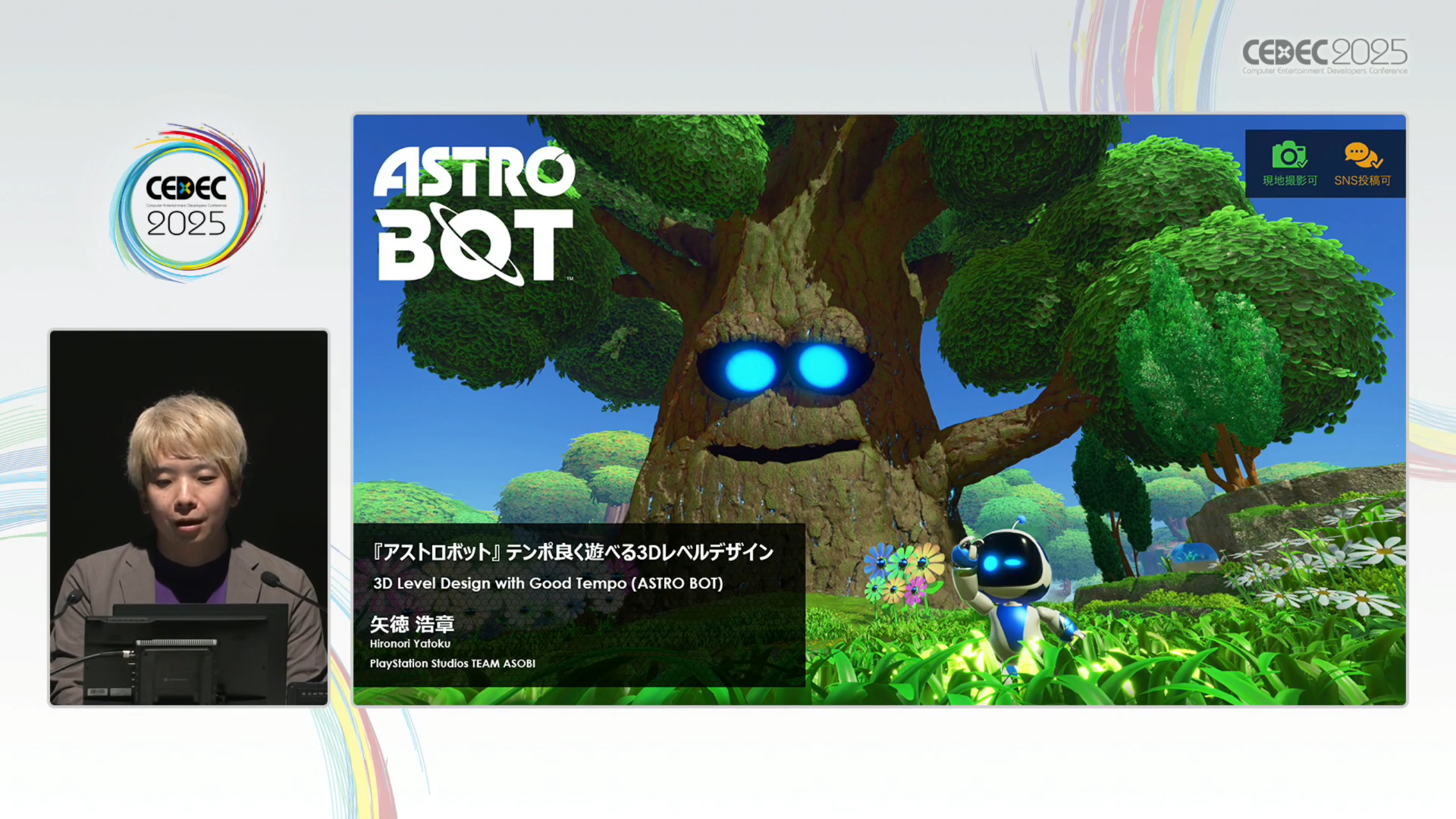
Before getting into the main topic, Yatoku defines "level design" as "planning to create a stage, actually creating terrain, arranging various things, and delivering them to users as an experience." He also said that he would be able to play with a fresh feeling so that various experiences on the stage would flow as "fast-paced level design".
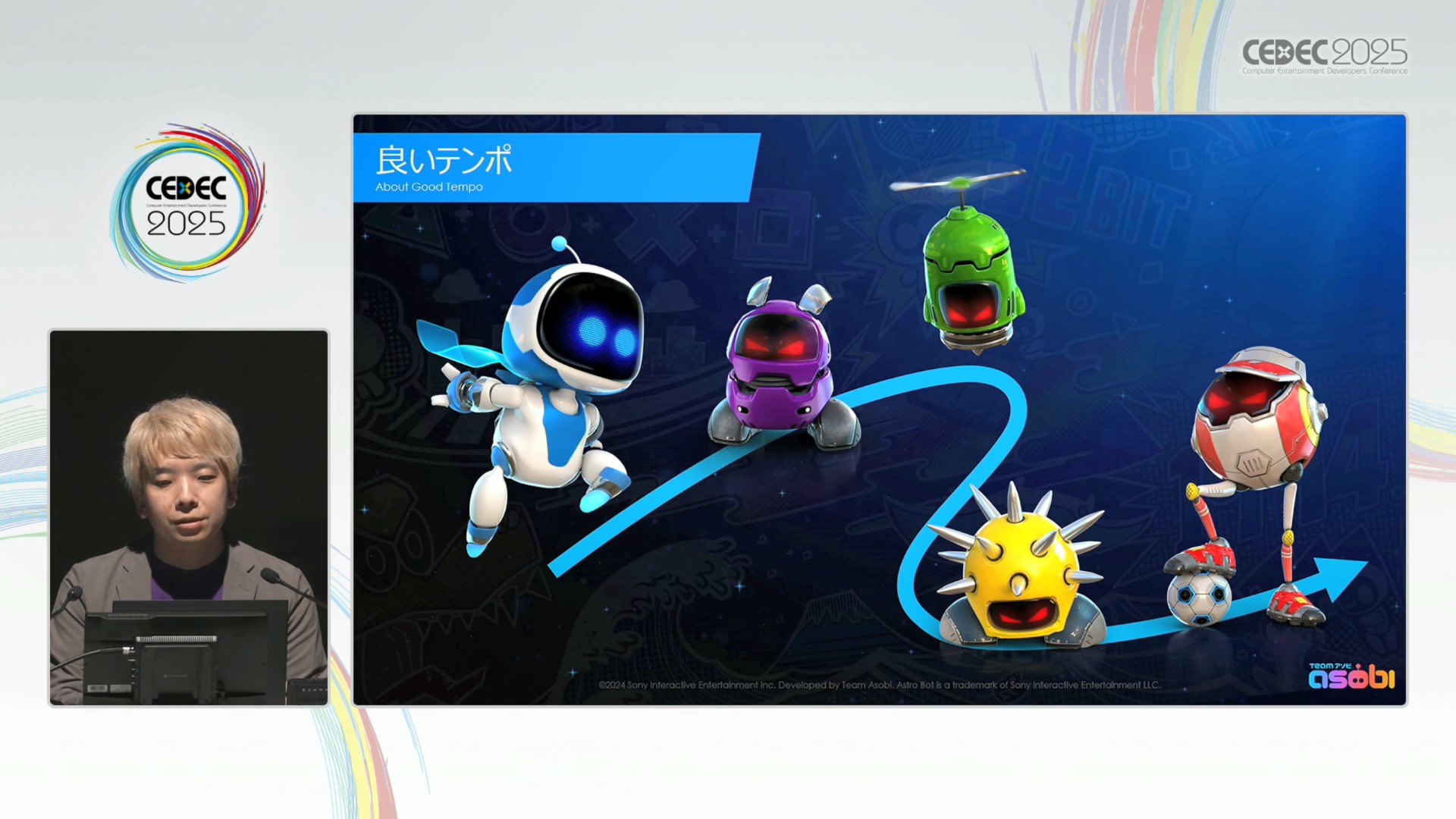
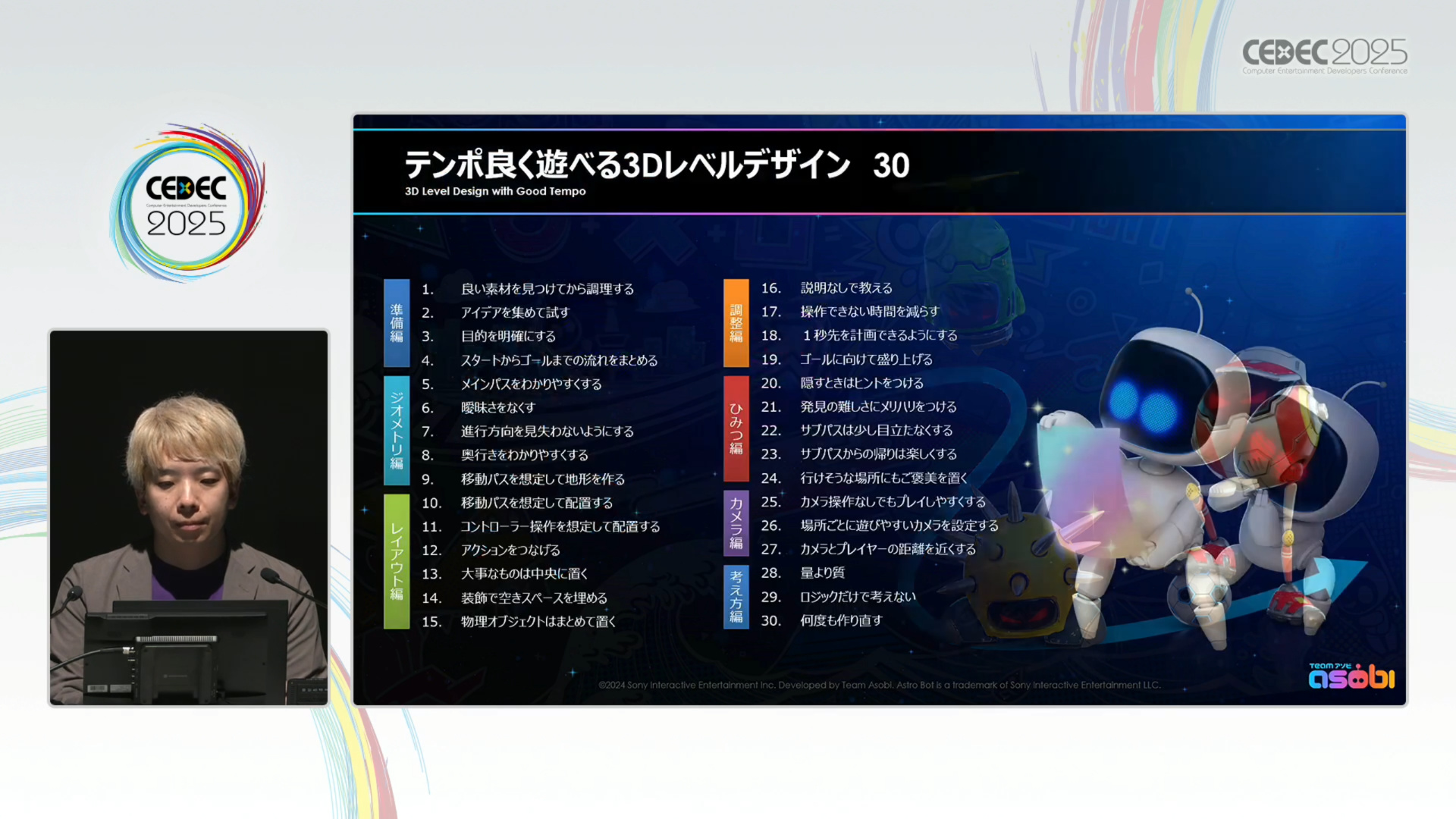
Preparation & Geometry
Layout & Adjustment


Released in 2024, Astro Bot for PS5 is an action game designed to satisfy everyone, from beginners to veteran players who have been playing games for many years. In the session, the concept and know-how of level design were conveyed.

Before getting into the main topic, Yatoku defines "level design" as "planning to create a stage, actually creating terrain, arranging various things, and delivering them to users as an experience." He also said that he would be able to play with a fresh feeling so that various experiences on the stage would flow as "fast-paced level design".


Preparation & Geometry
Preparation is important in everything, so the first step is to "1. Find good ingredients before cooking." Mr. Yatoku says, "A level designer is like a cook, and it is also important to identify good ingredients that can be used for cooking (stage)." For example, if you find the mechanism of squeezing water out of a sponge with the [R2] button interesting, you can expand your ideas about what kind of food you can make with it.
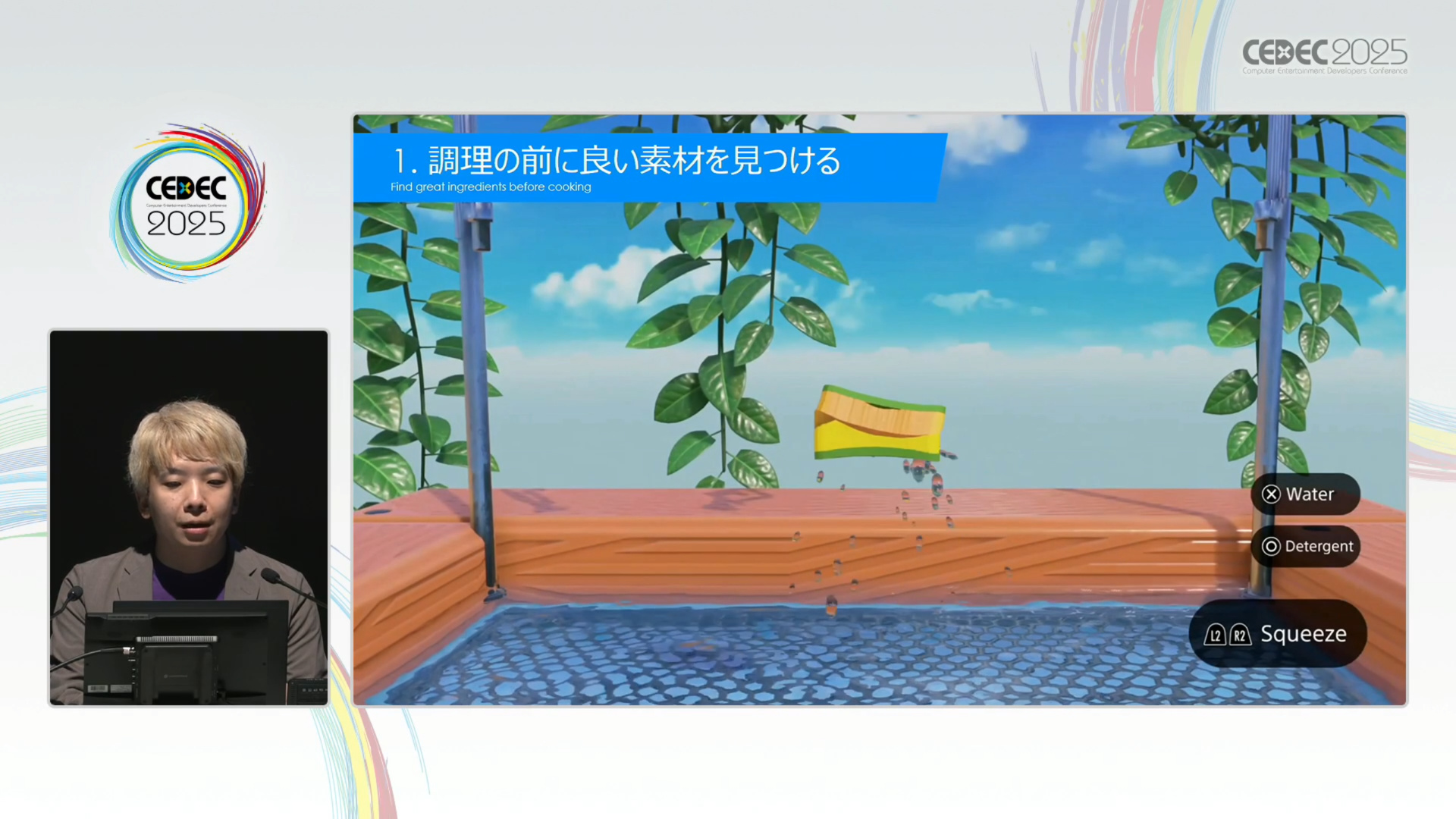
Since you need to suck in water, you will realize that water will be related to the art theme of the stage, and you will also need something to pour squeezed water.

Next, "2. Gather ideas and try them". Not only can you use your ideas as they are, but you can also combine them with other things. However, since individual strength is limited, brainstorming is carried out with the help of the team. At Team ASOBI, we draw and collect ideas for each sticky note and archive them.
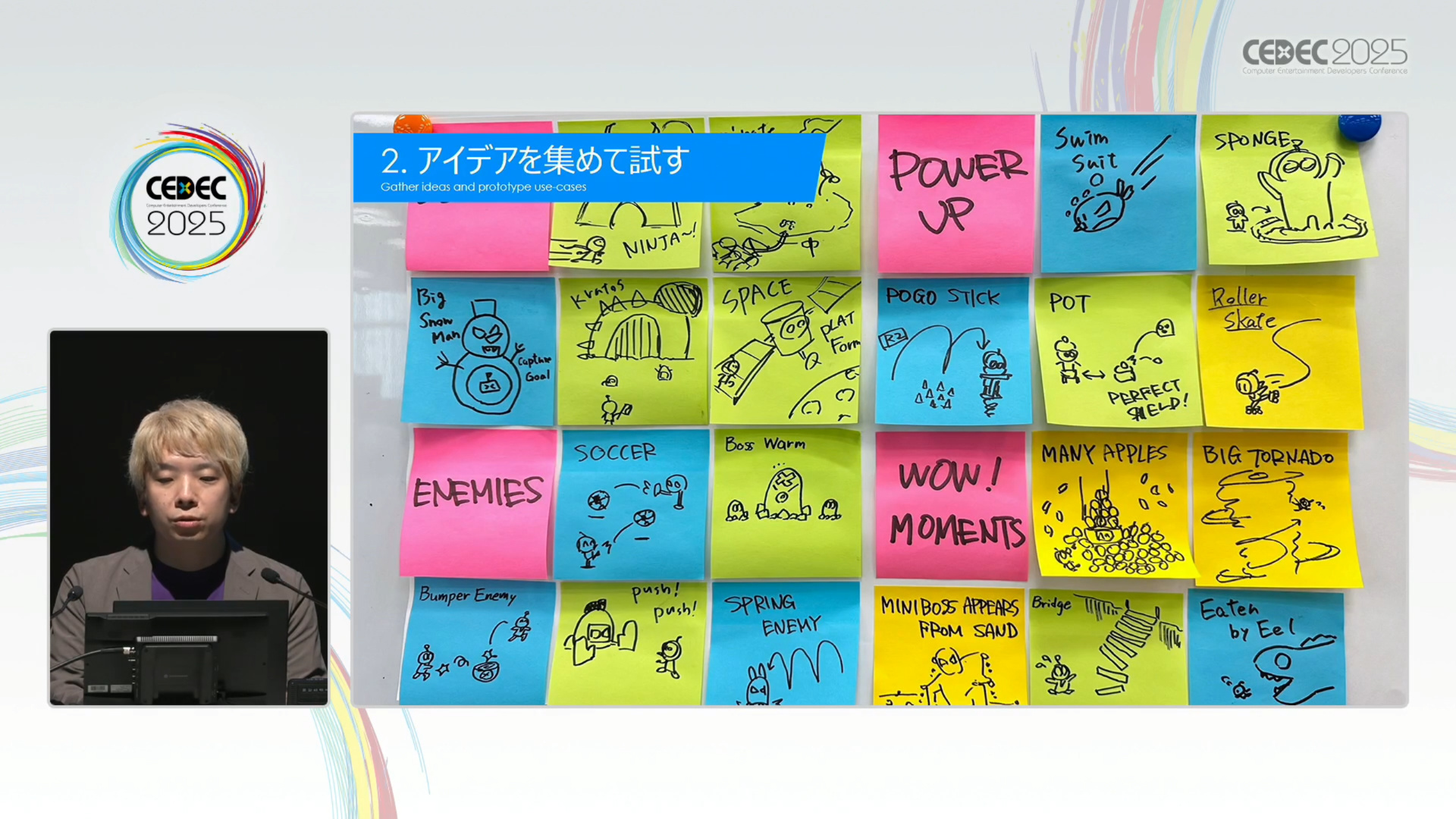
By creating a prototype (use case) that can actually be played, the level designer can start designing the stage with the knowledge of "good experience" and "fun play".
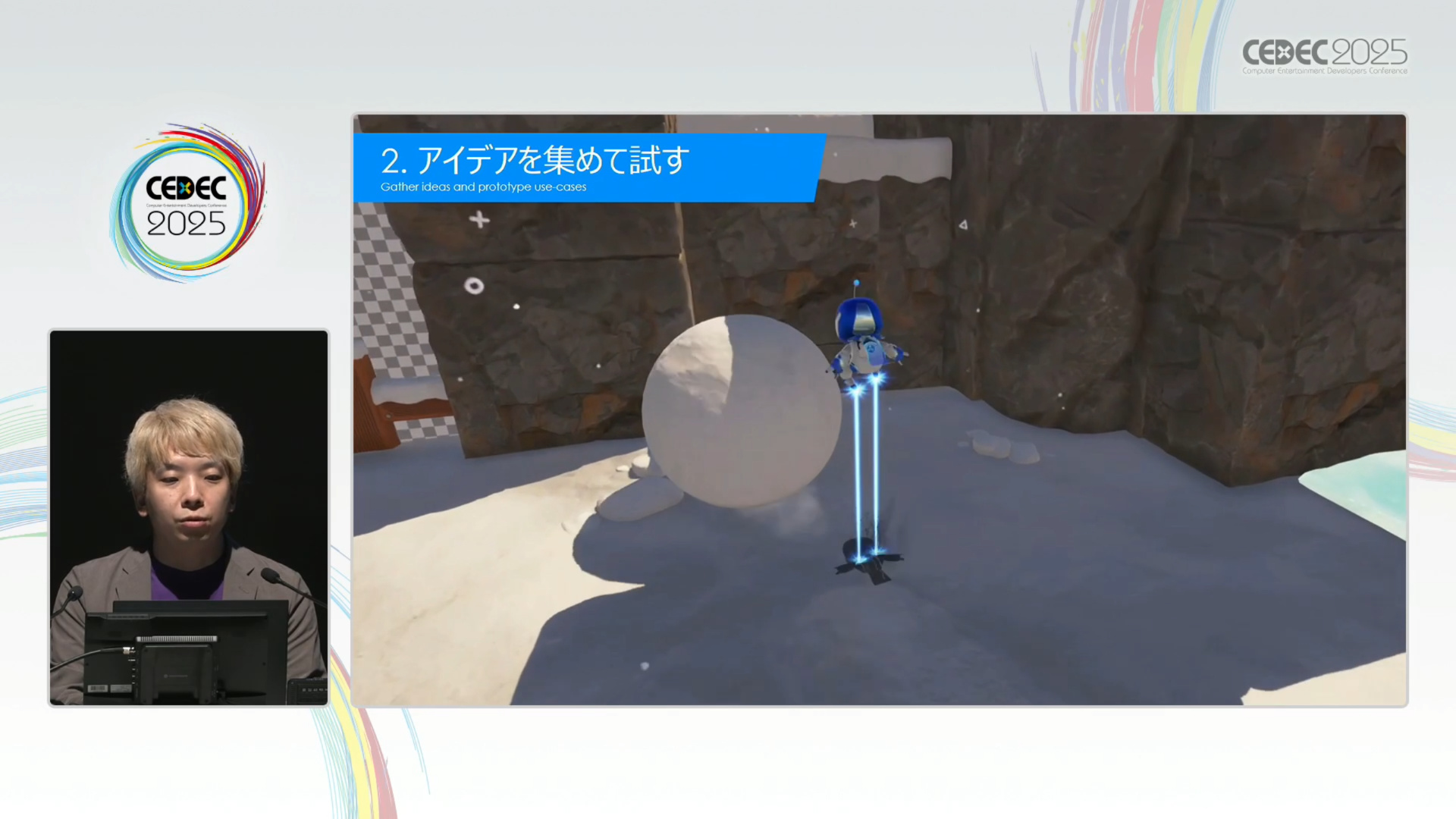
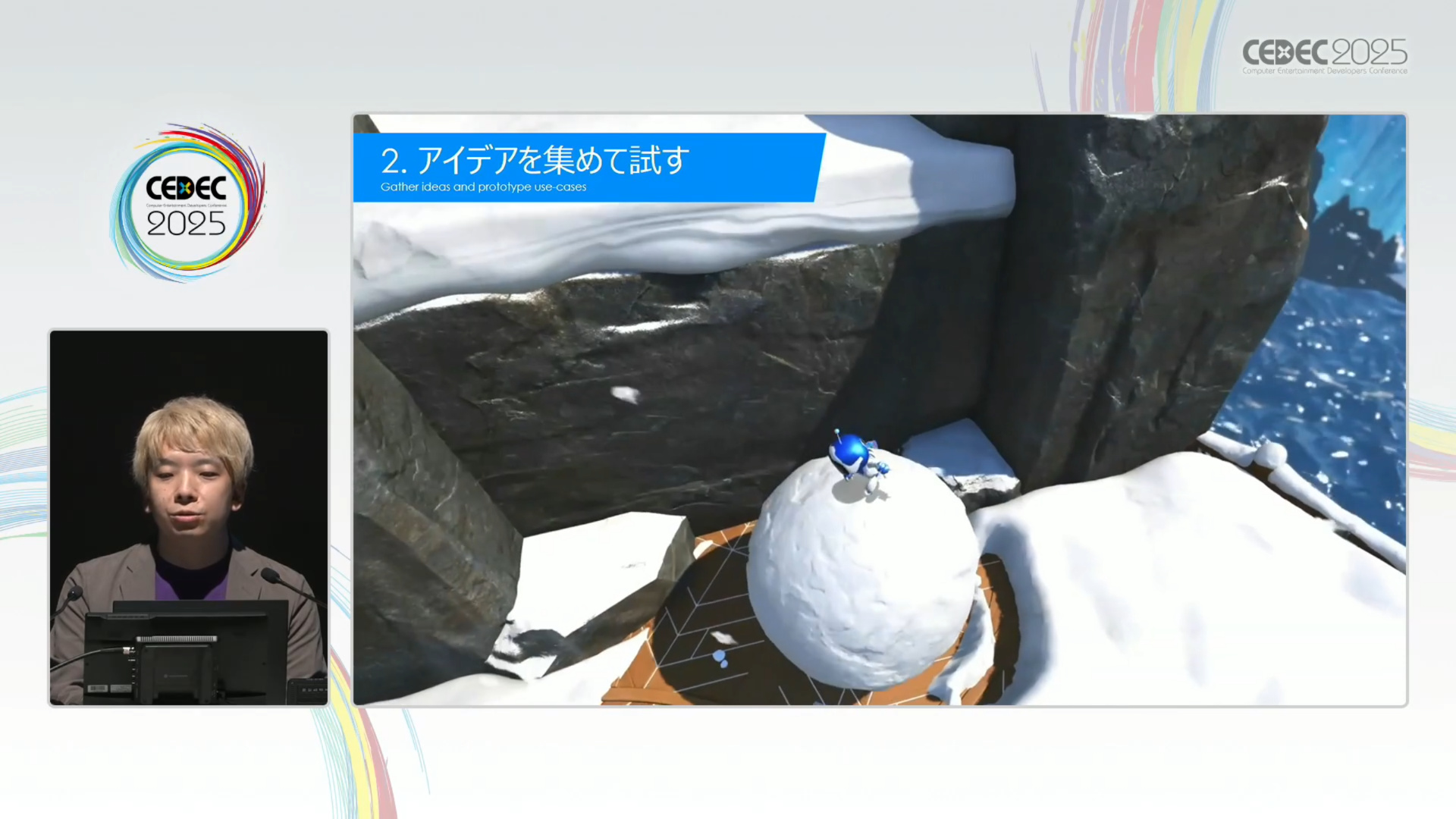
And "3. Clarify the purpose". Once you have a unique gameplay, create a combination of art themes that take advantage of it and define your purpose to "create this experience." This is where we start planning the stage for the first time.
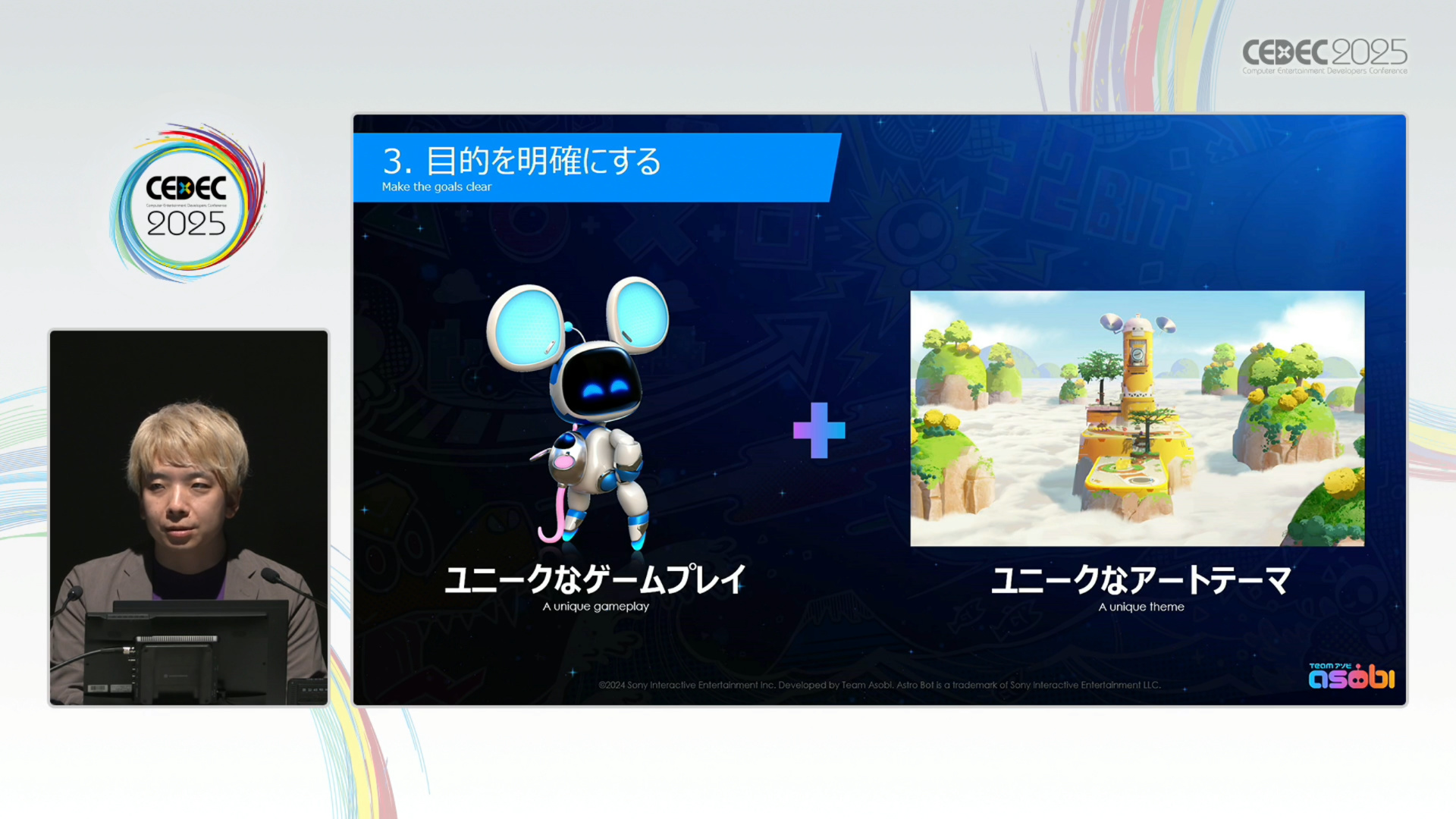
Next, as one picture, "4. Plan from start to finish". Decide here the landmarks, enemies that appear, the start and goal, and what kind of play to place. Also, determine the desired emotional curve.

Team ASOBI's level designers create their own stages, so there is no need for detailed blueprints. After that, you will play with the assembled items and rework them.
Next, Mr. Yatoku moves on to geometry (the physical shape and structure of the entire stage). These are ideas that don't get the player astray, but make them feel like they're deciding where they're going.
To do this, first of all, "5. Make the main path easy to understand". The main pass is the main path from the start to the goal. If this is clear, players can take a detour with peace of mind. There is also a way to follow chains and pipes to know where to go.
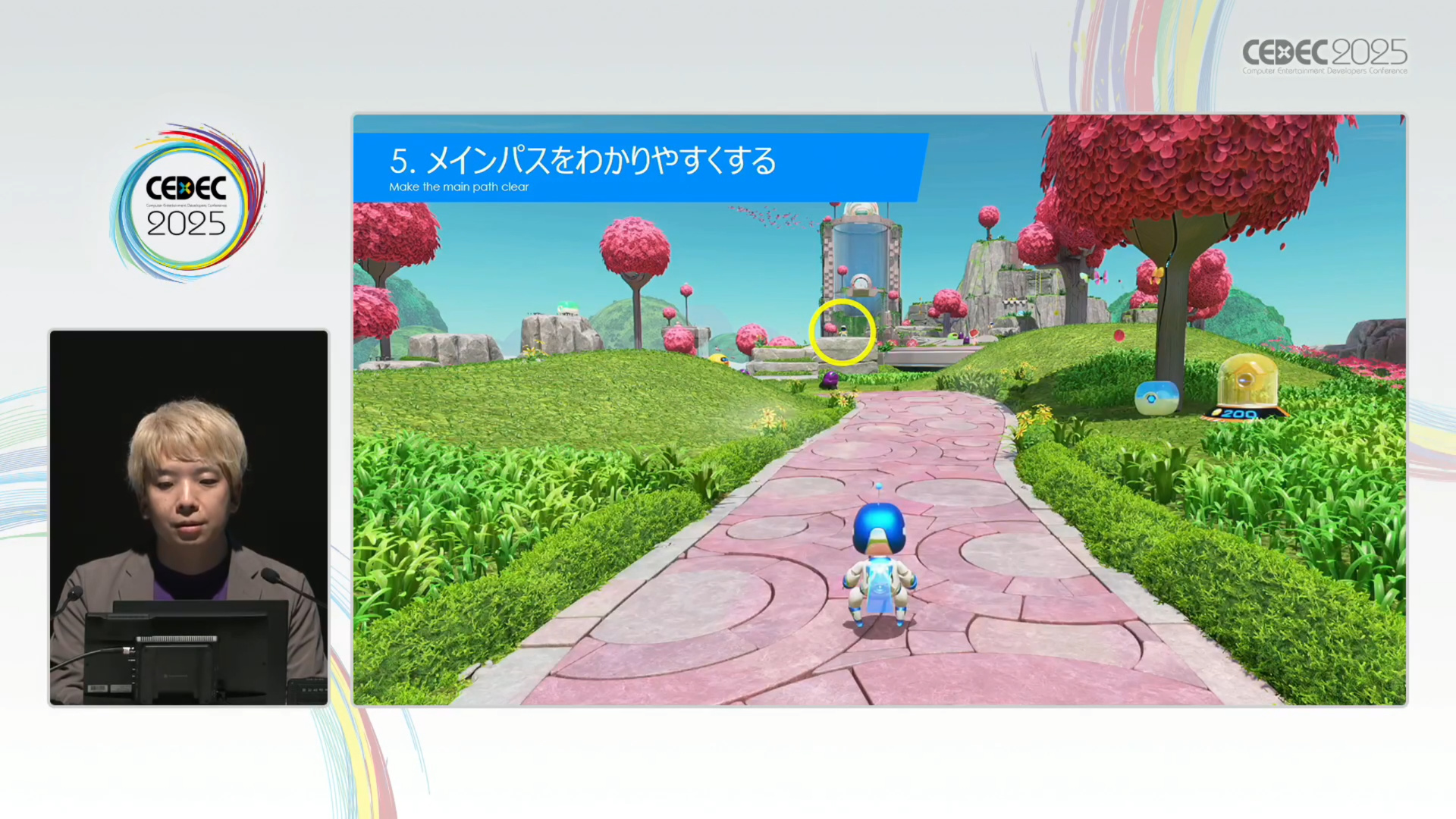
It is also important to "6. Eliminate ambiguity". It is important to be clear whether the steps in front of you are a slope or whether you need to jump.
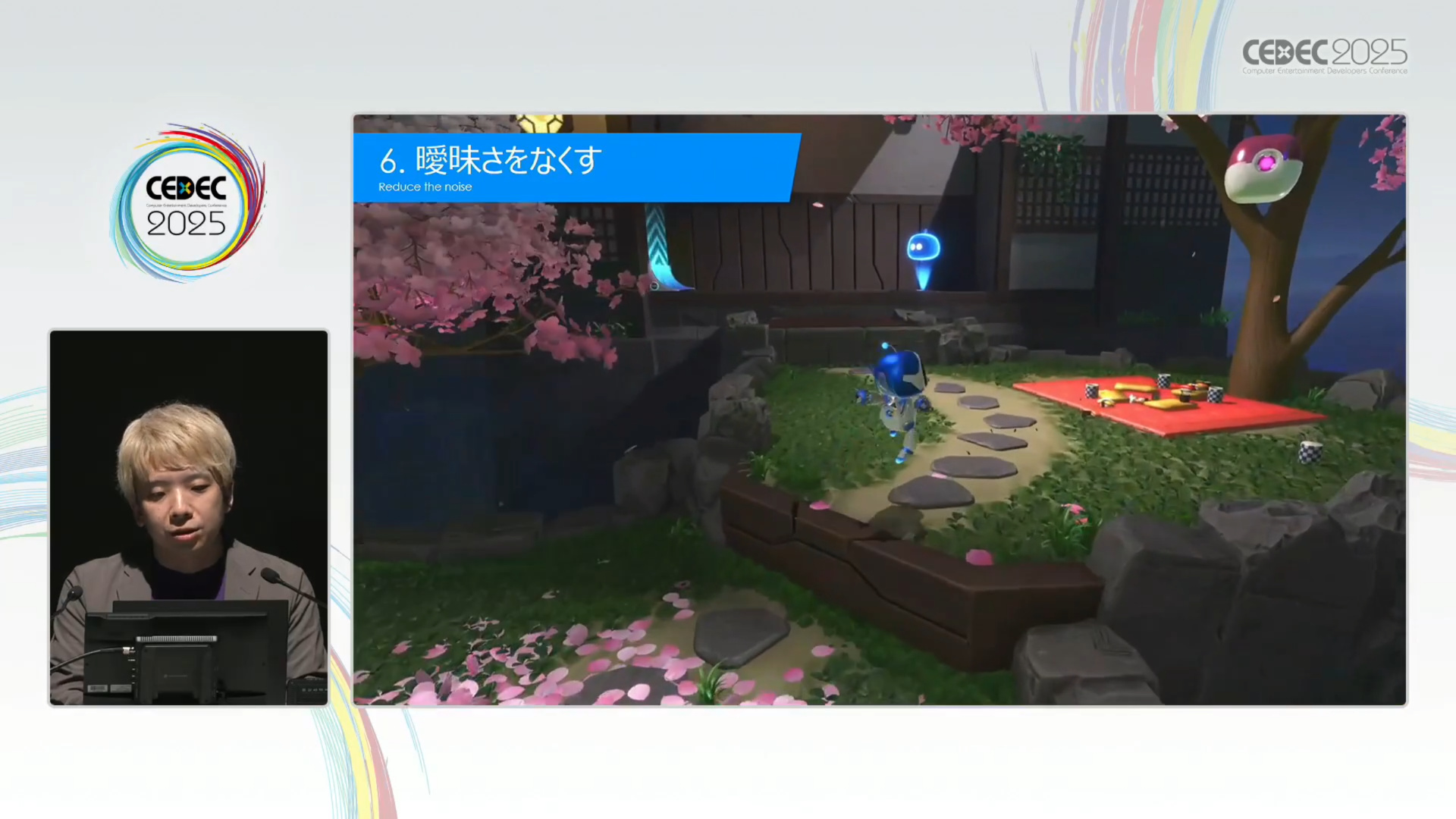
Another point to consider is that the player should not lose sight of the direction of travel in 7. The goal is basically placed at the location of a landmark. Also, if the terrain changes, it is not a mistake to go straight up or climb up for the time being.
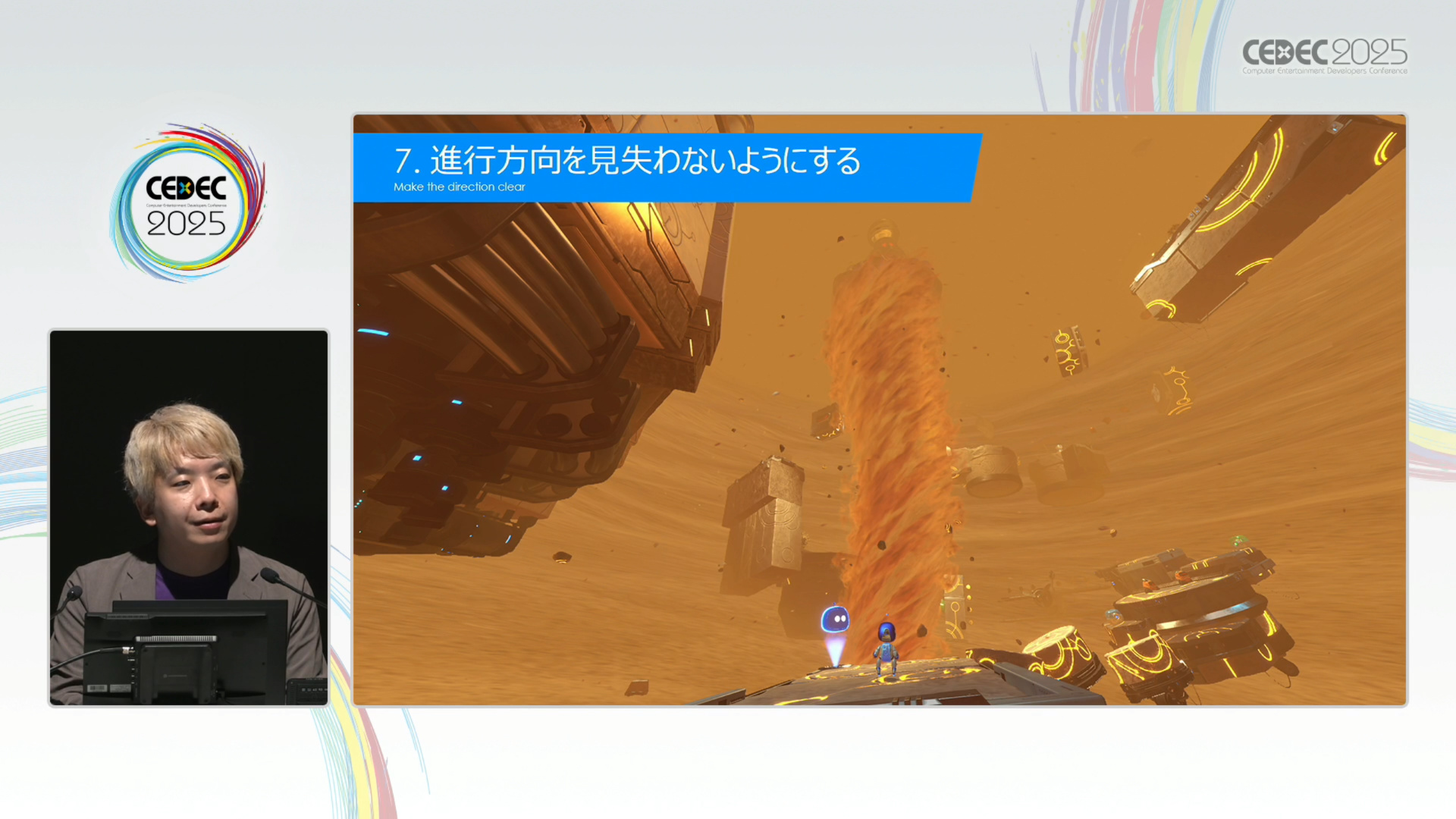
Surprisingly, it is easy for players to be stressed when they make mistakes without knowing the depth of the stage. The trick to "8. Make the depth easier to understand" is to line up a number of scaffolding of the same size and shape to make it easier for players to understand naturally. Also, if you align the width of the entrance and exit, you can tell them the route you want to take.
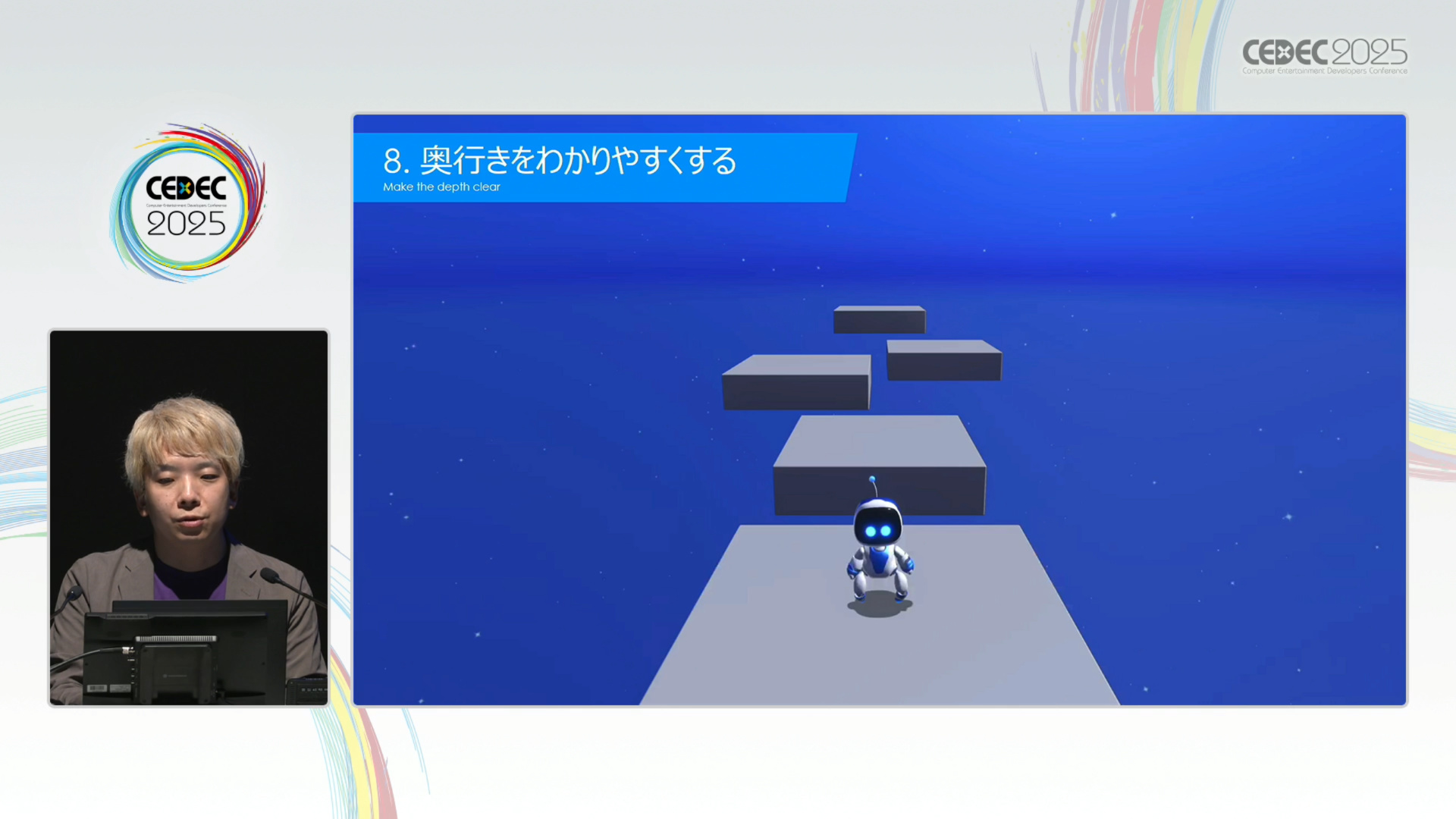
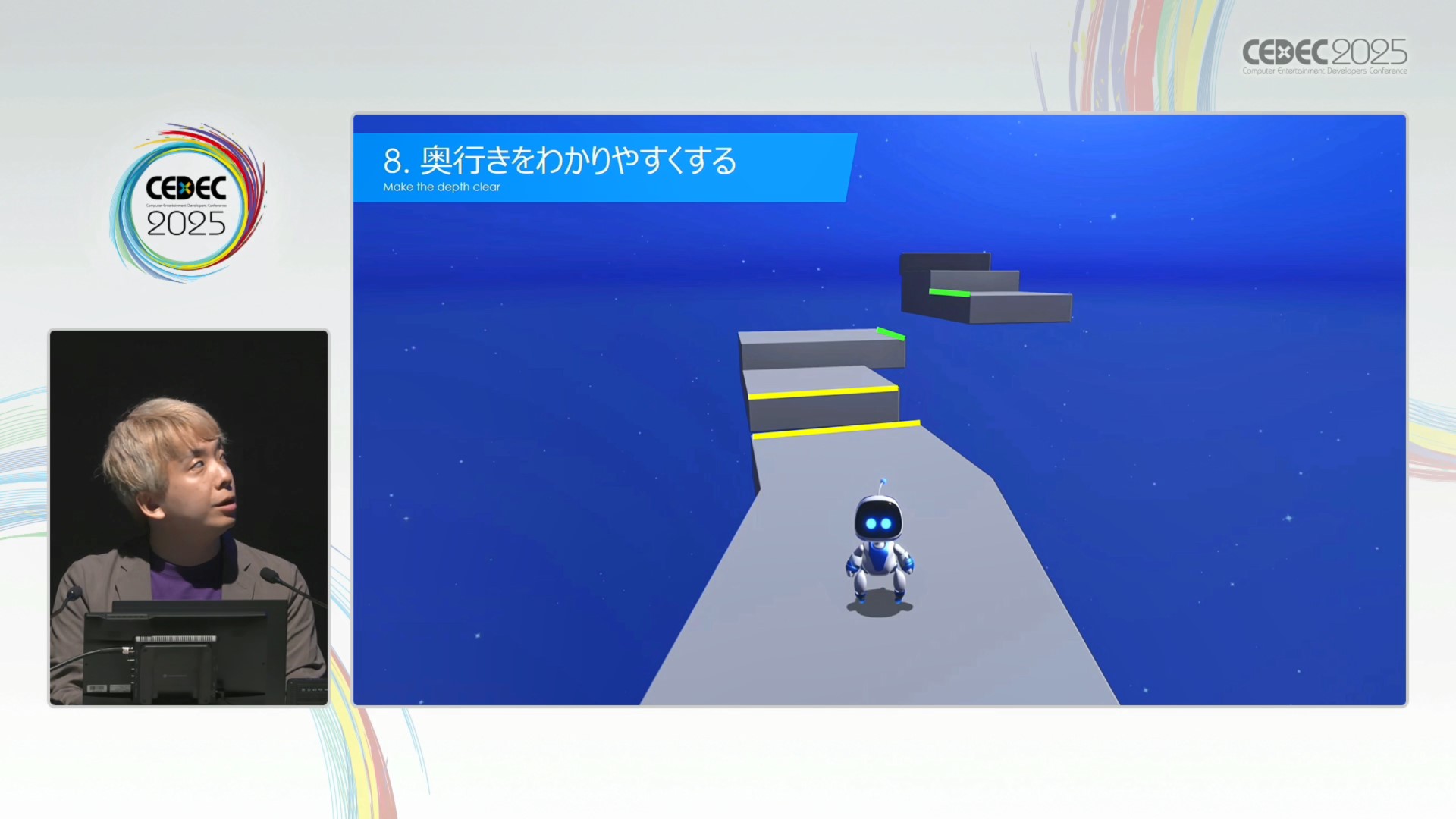
Together, it is possible to first "create terrain assuming 9. movement path". For example, if you make a step shape that is directly opposite the expected route, the player can move smoothly.
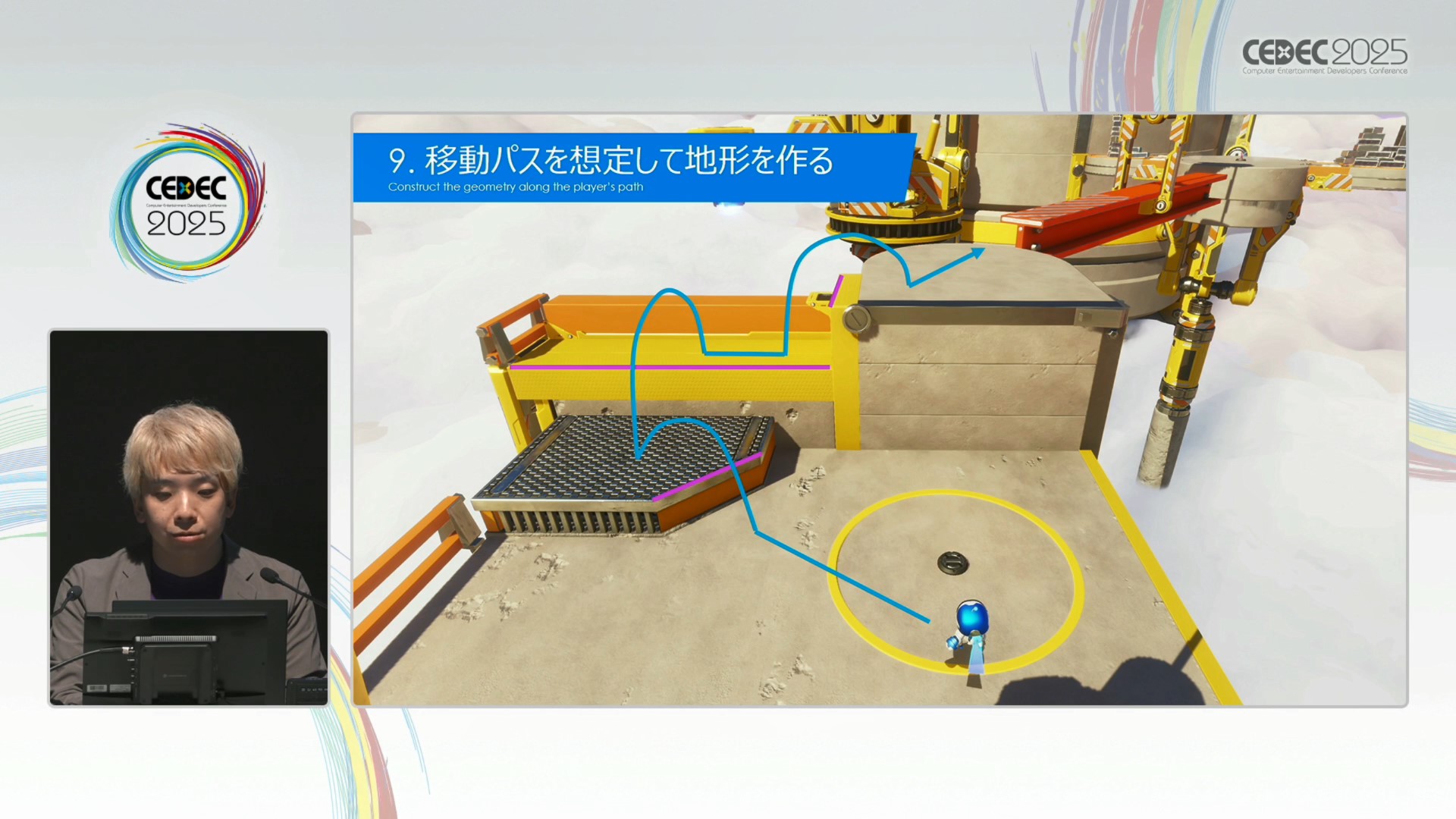
Also, in the terrain of the slide above, you walk on concrete, jump on metal, walk on metal, and then concrete again...... In this way, I am also aiming for the fun of changing the footsteps and the haptic (vibration) of the controller.
Layout & Adjustment
Next, let's talk about the layout of placing enemies, objects (objects), decorations, etc. on the stage. An example of "10. Arranging a movement path assumed" was a block in the middle of a movement path. Here, the goal is to punch the block and quickly cut it back in the opposite direction, so that the player can feel comfortable.
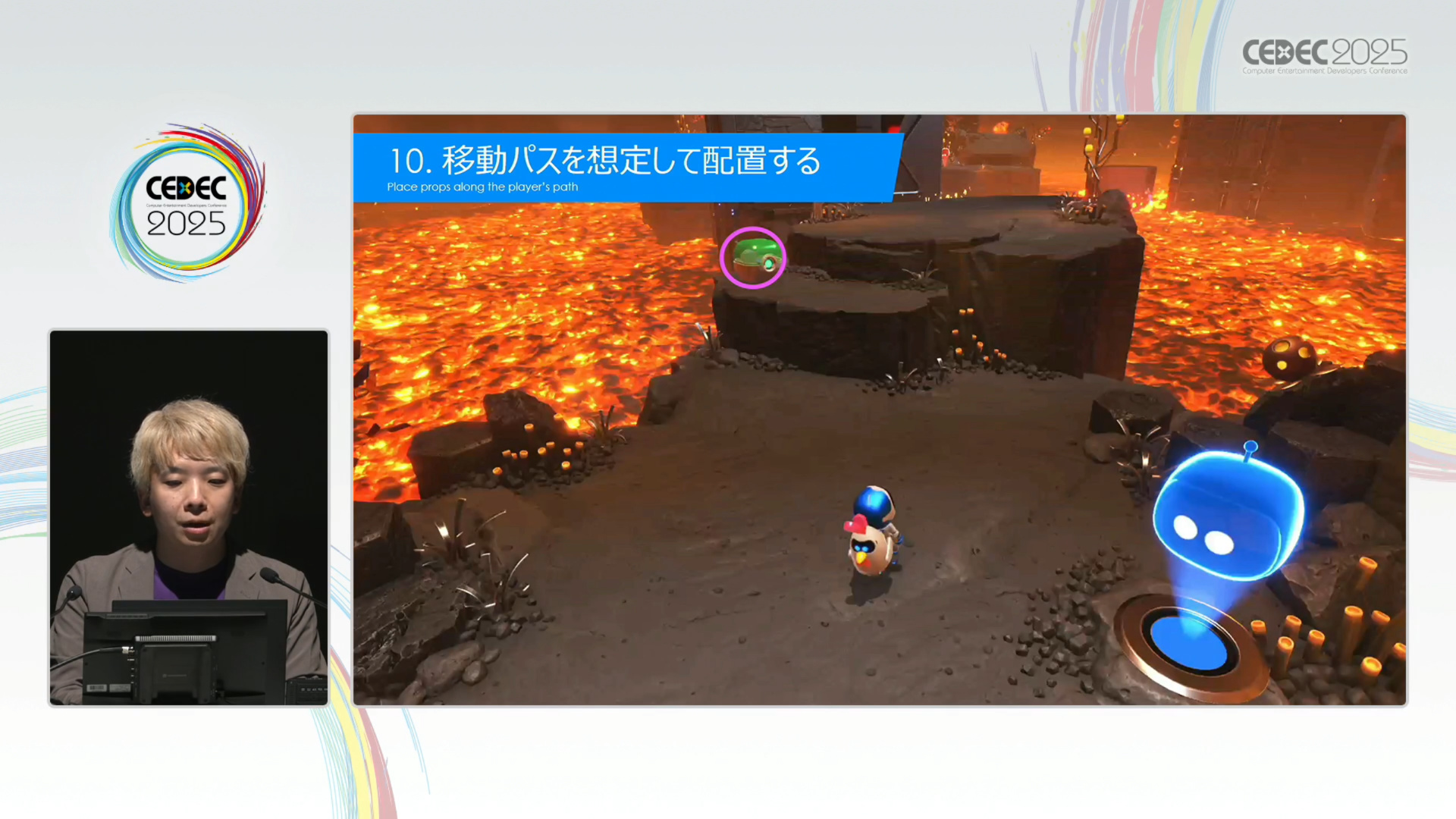
"11. Position with controller operation in mind" is to make the operation rhythmic so that people can feel comfortable. Kick of "PaRappa the Rapper"! Punch! It's all in the mind!…… However, the idea is to have them attack and jump according to the notes of the rhythm game and make them feel good.
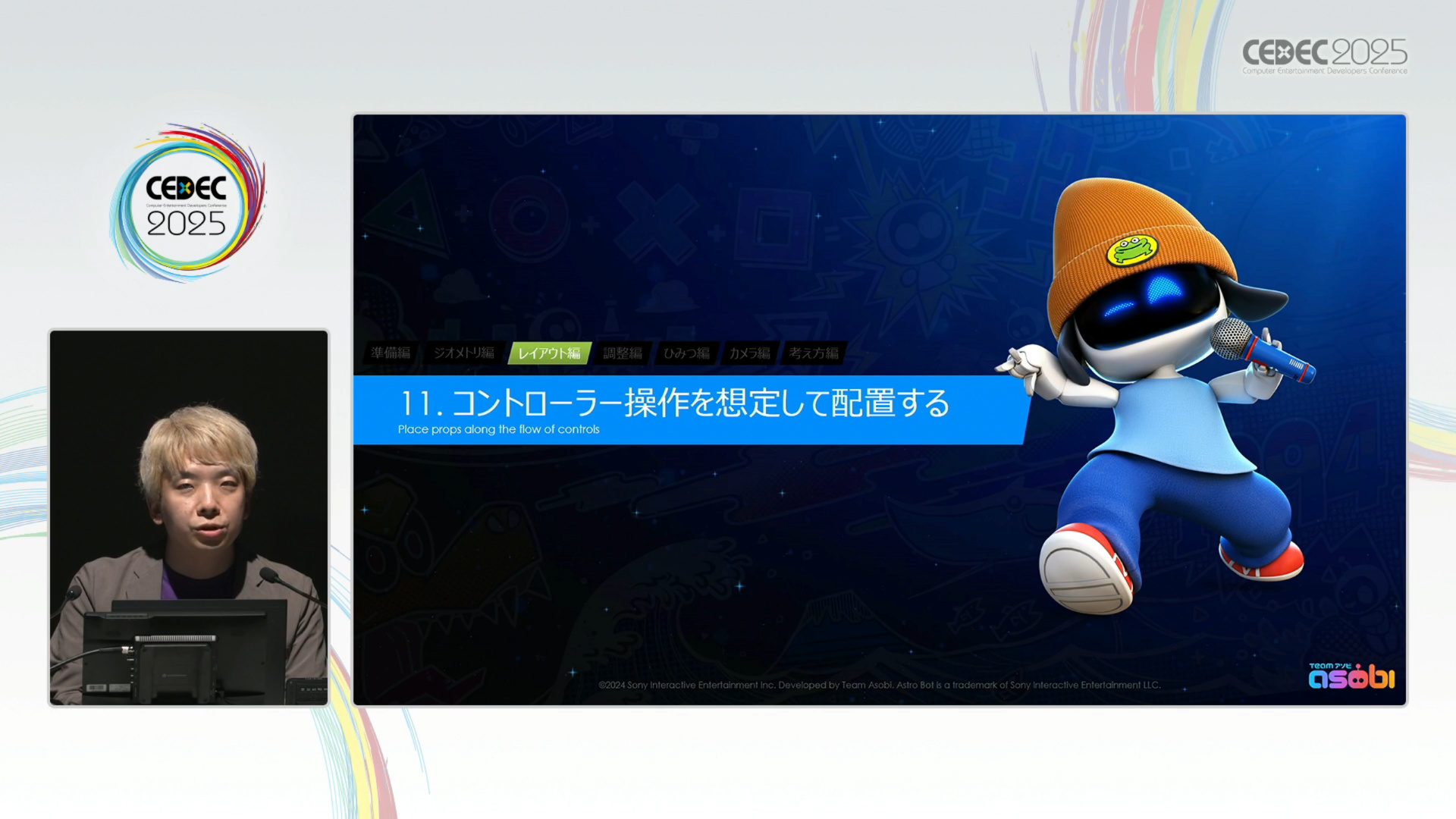
The next "12. Connect actions" is a devise to prepare a place to perform one action operation continuously after having them memorize it. Also, when you want to experience a slightly difficult game, such as moving while running away from something or taking action under a time limit, it is effective to have them try simple examples first.

If there is something you don't want the player to miss, you can say, "13. Put the important things in the center". This is effective if it is a little overdone, and more importantly, the surrounding ground is emphasized by changing the texture.
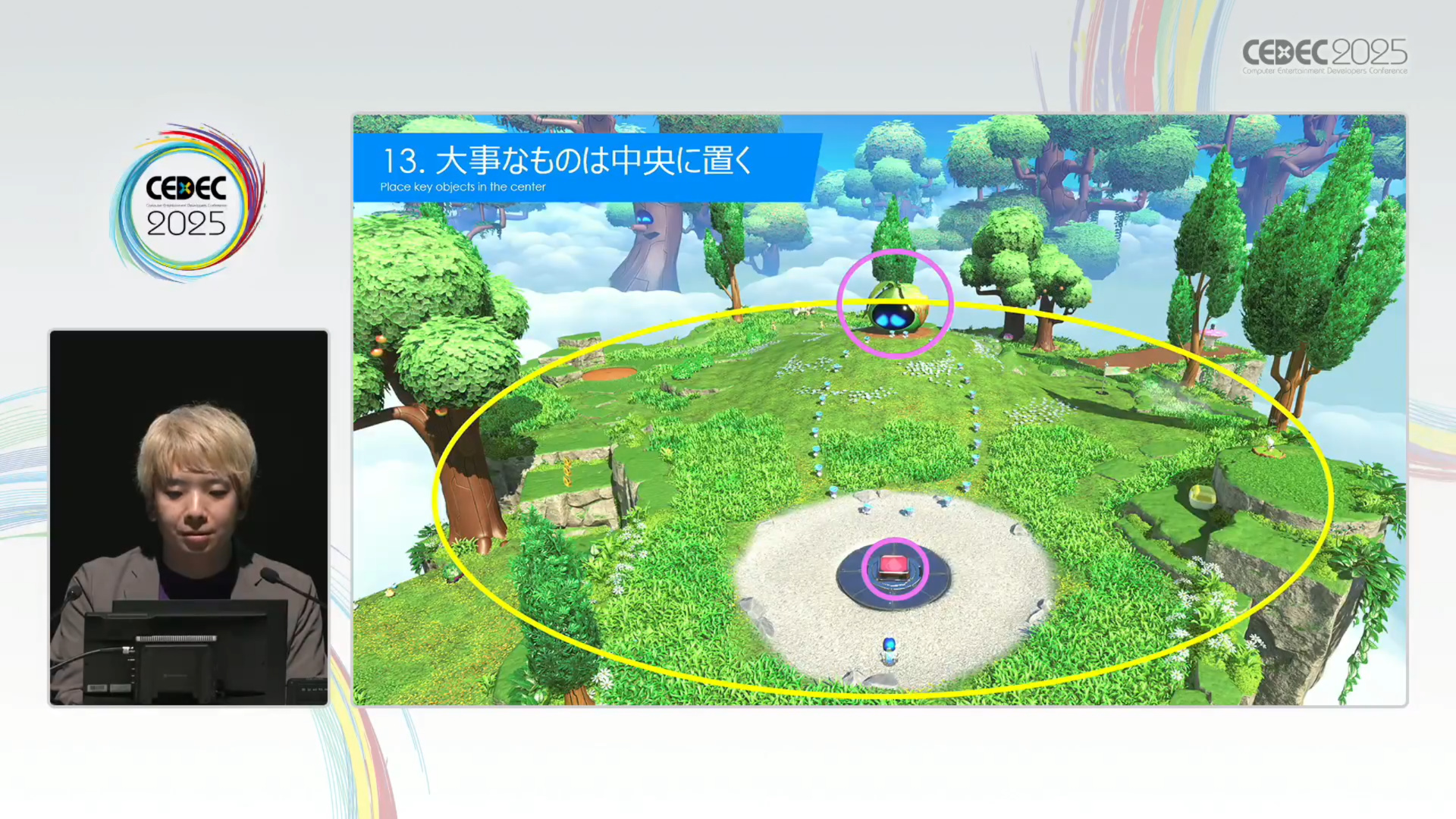
The boss is located in the center of the circular arena, but if you damage the boss, you can move away from the center to create a sense of thrill and urgency.

The placement technique is not only emphasized, but also casual. "14. Fill the empty space with decoration" is a way to make the stage feel spacious and free-moving, without feeling monotonous. For example, by placing grass that does not block movement, you can somehow divide the area without hindering movement. You can also entertain them with the sound of touching grass and haptic.
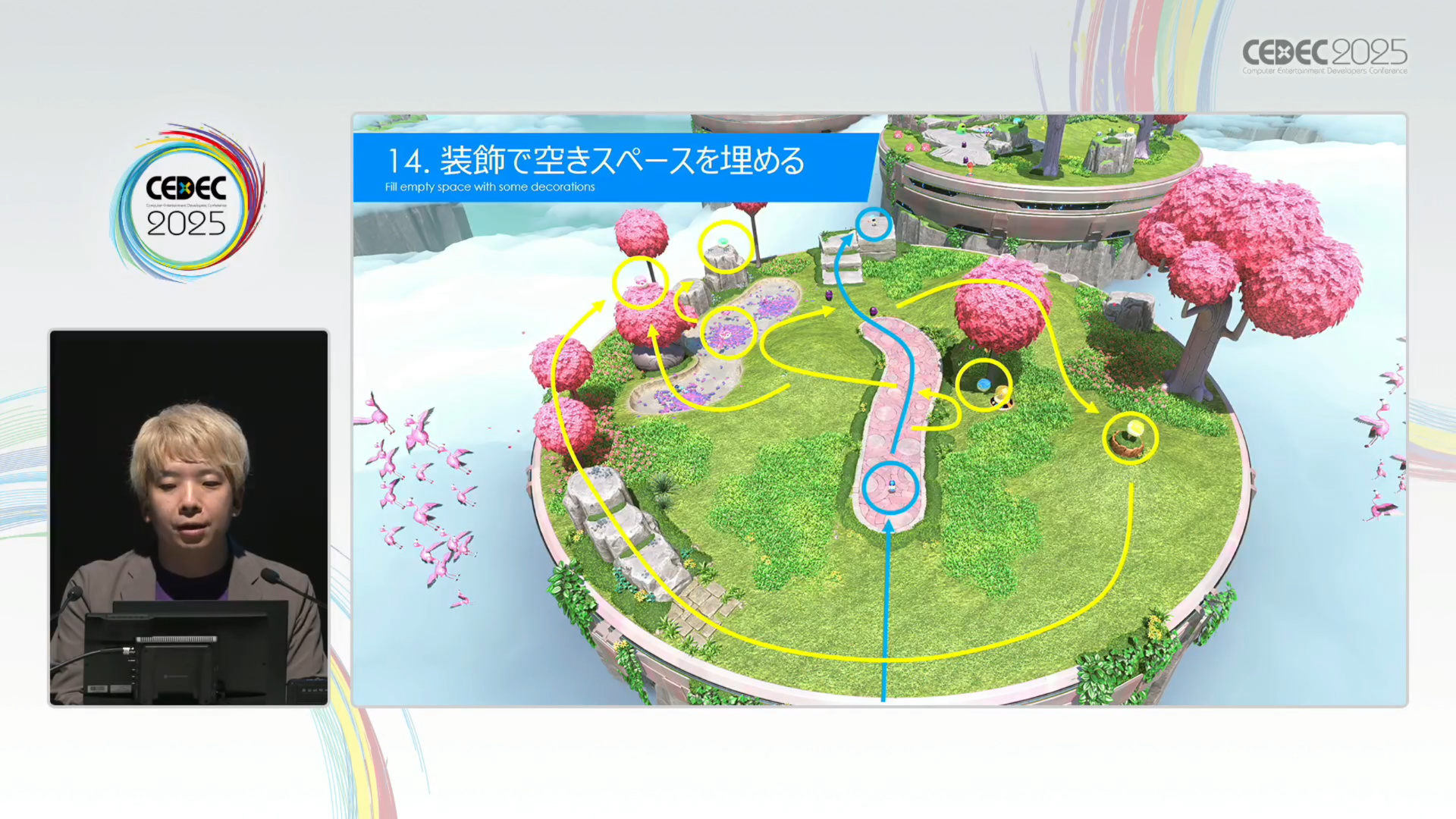
"15. Put physical objects together". This is a technique that takes advantage of the habit of people who tend to feel uncomfortable when they go to a messy place from the beginning, but on the contrary, they love to make a mess themselves.
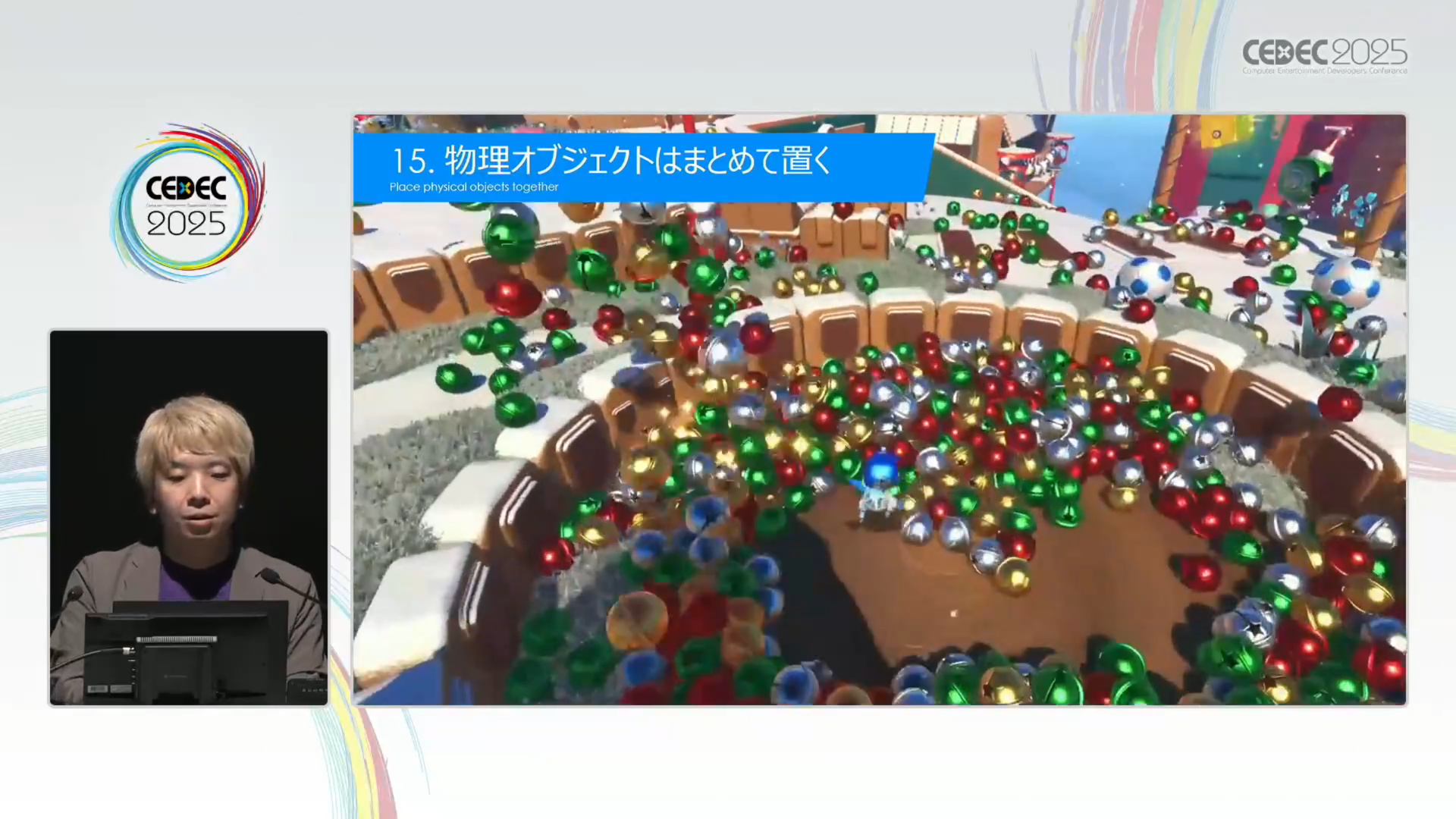
Another option is to use a large number of physical objects to show that the direction of gravity on the stage has changed.
"16. Teach without explanation" means that you should not use text as much as possible during the game and tell you how to play. This is because if you let them read the text, the game will stop and the tempo will be slow.
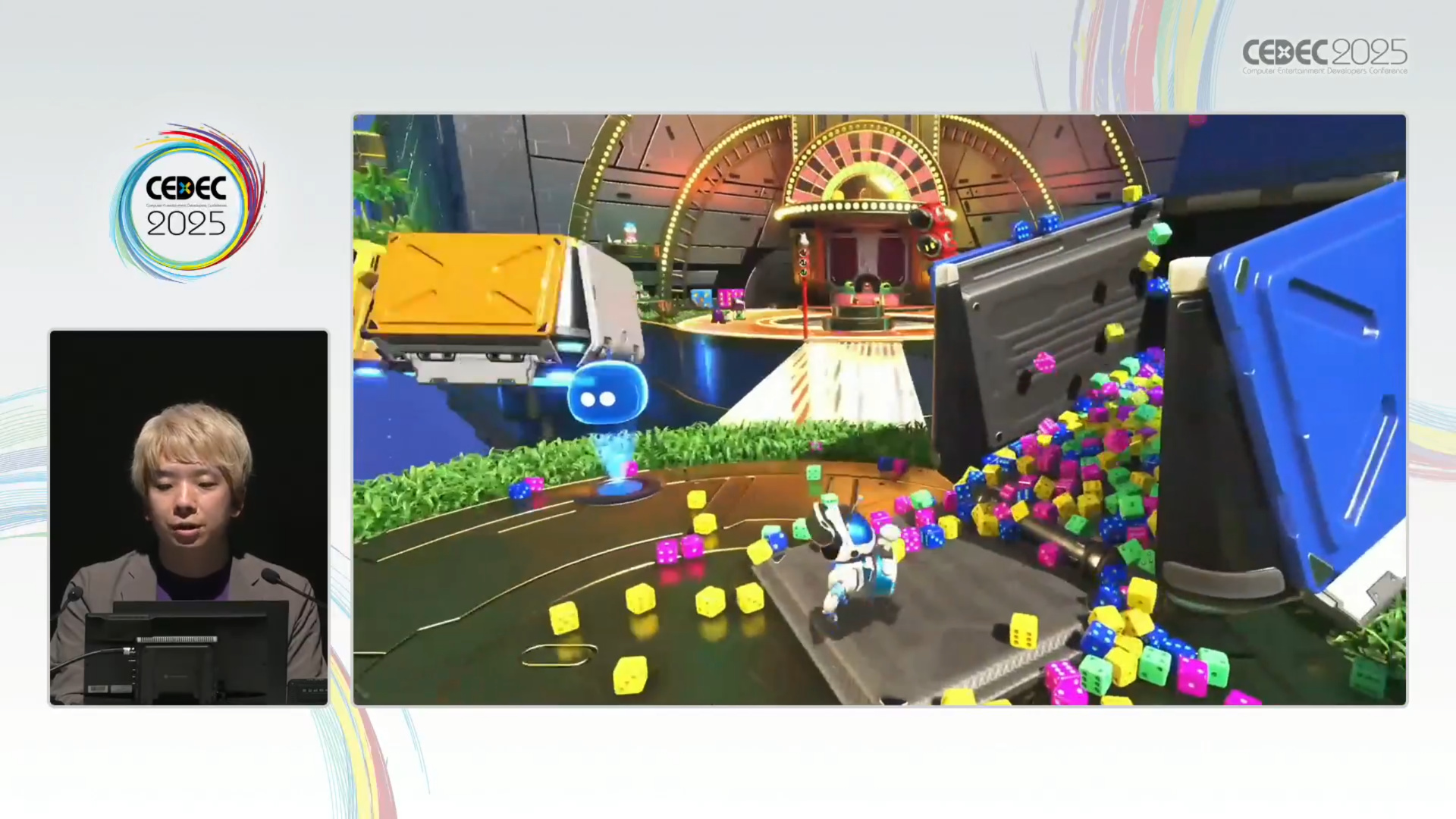
To tell them about new actions and gimmicks, it's a good idea to have a place where people can actually try them out. Once the player understands, they also know how to get out of it.
Also, just before a boss battle, you can apply "12. Connect actions" to tell you the action you want to use during the battle first.
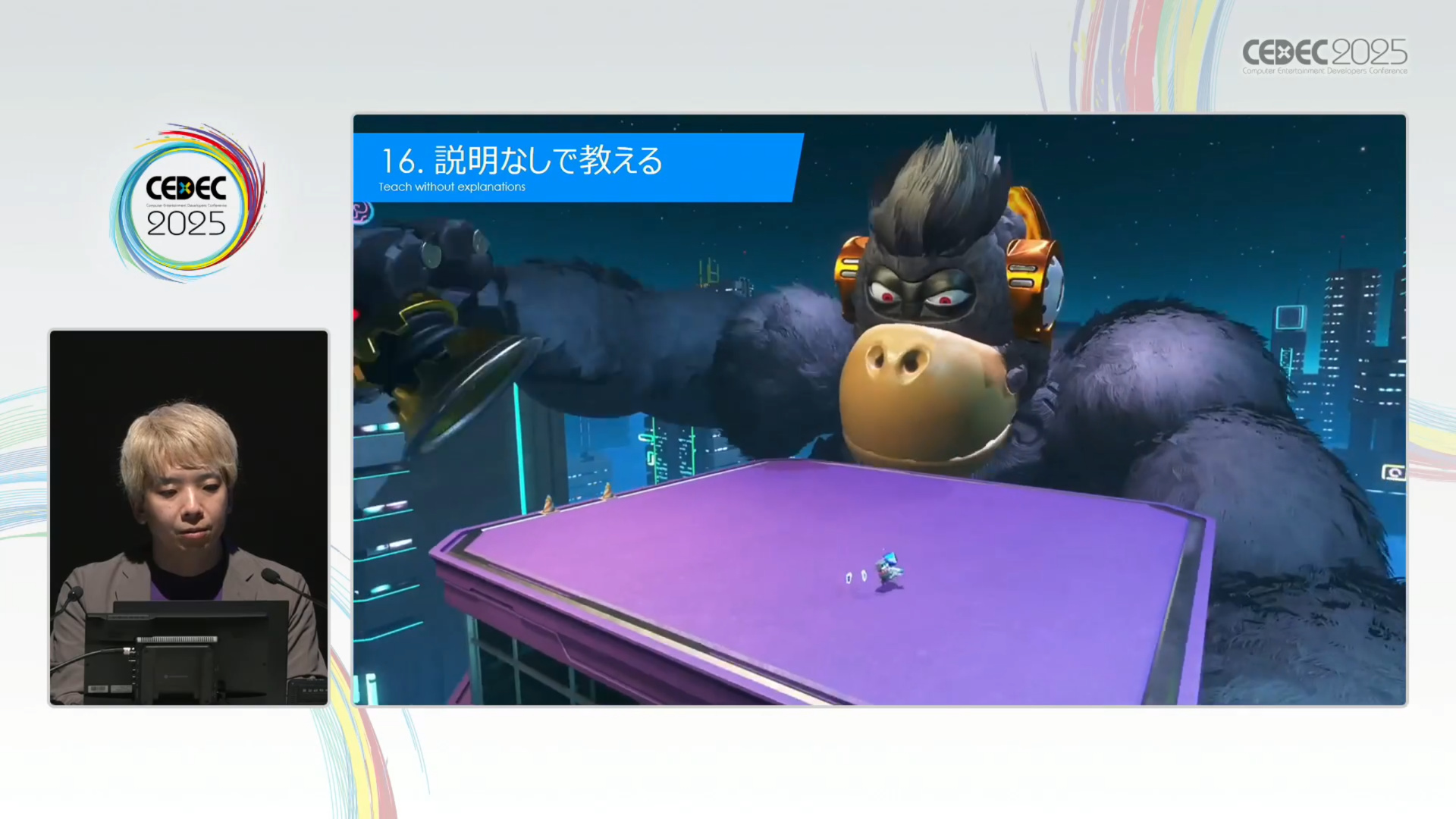
During the game, players are likely to feel dissatisfied if they cannot operate for a long time. "17. Reduce the time when you can't operate" is the idea of making it possible to operate even when the shape of the stage changes.
Even if you don't move on, it's better than just watching. This makes it easier to feel that you have experienced it rather than "seeing the story."
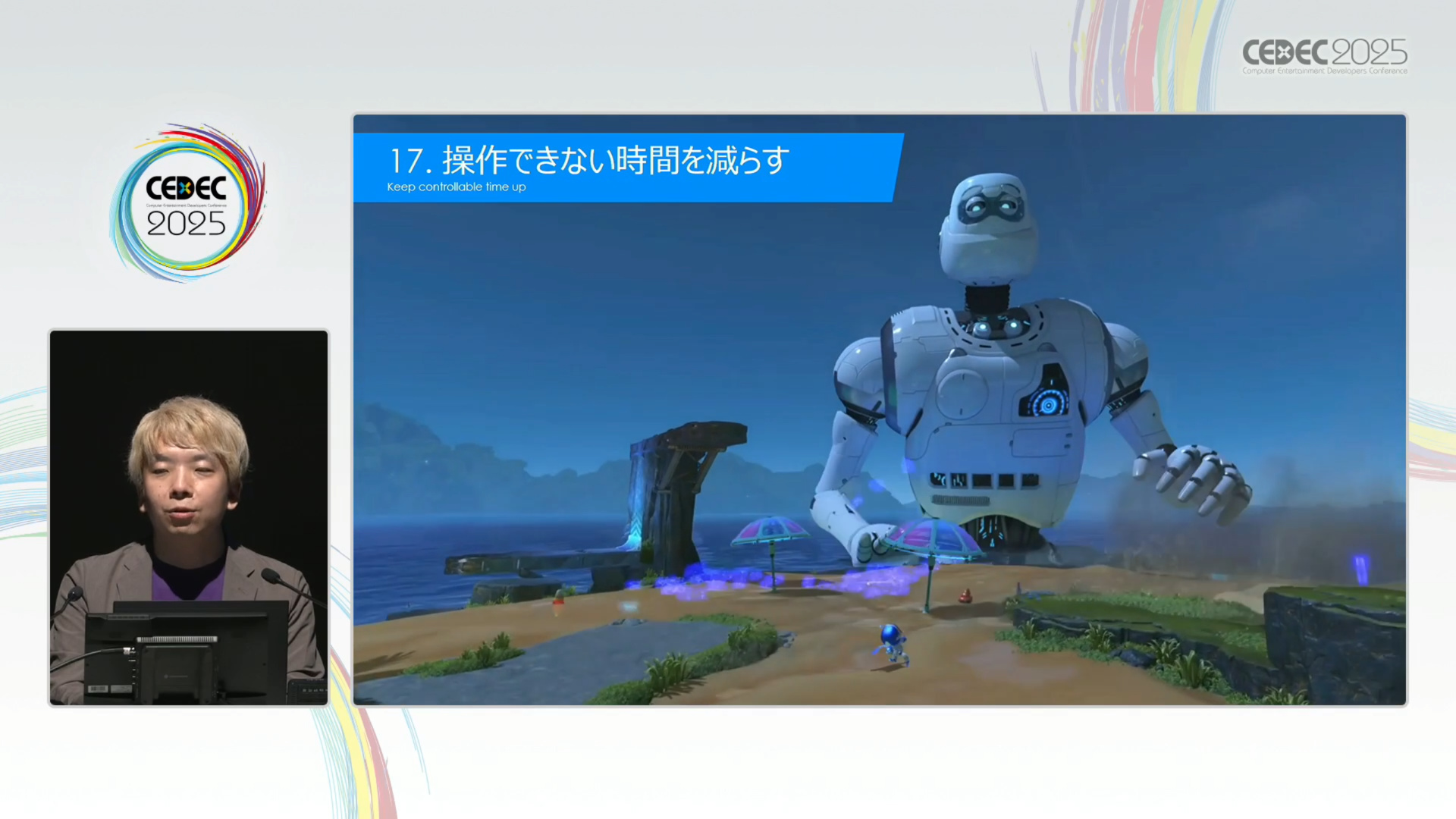
The next step is to be able to plan 18.1 seconds ahead. Humans cannot act at the moment they think, and they need about one second to change their plans. Therefore, if you introduce enemies at the right time, the player can deal with them and have fun at a good tempo.
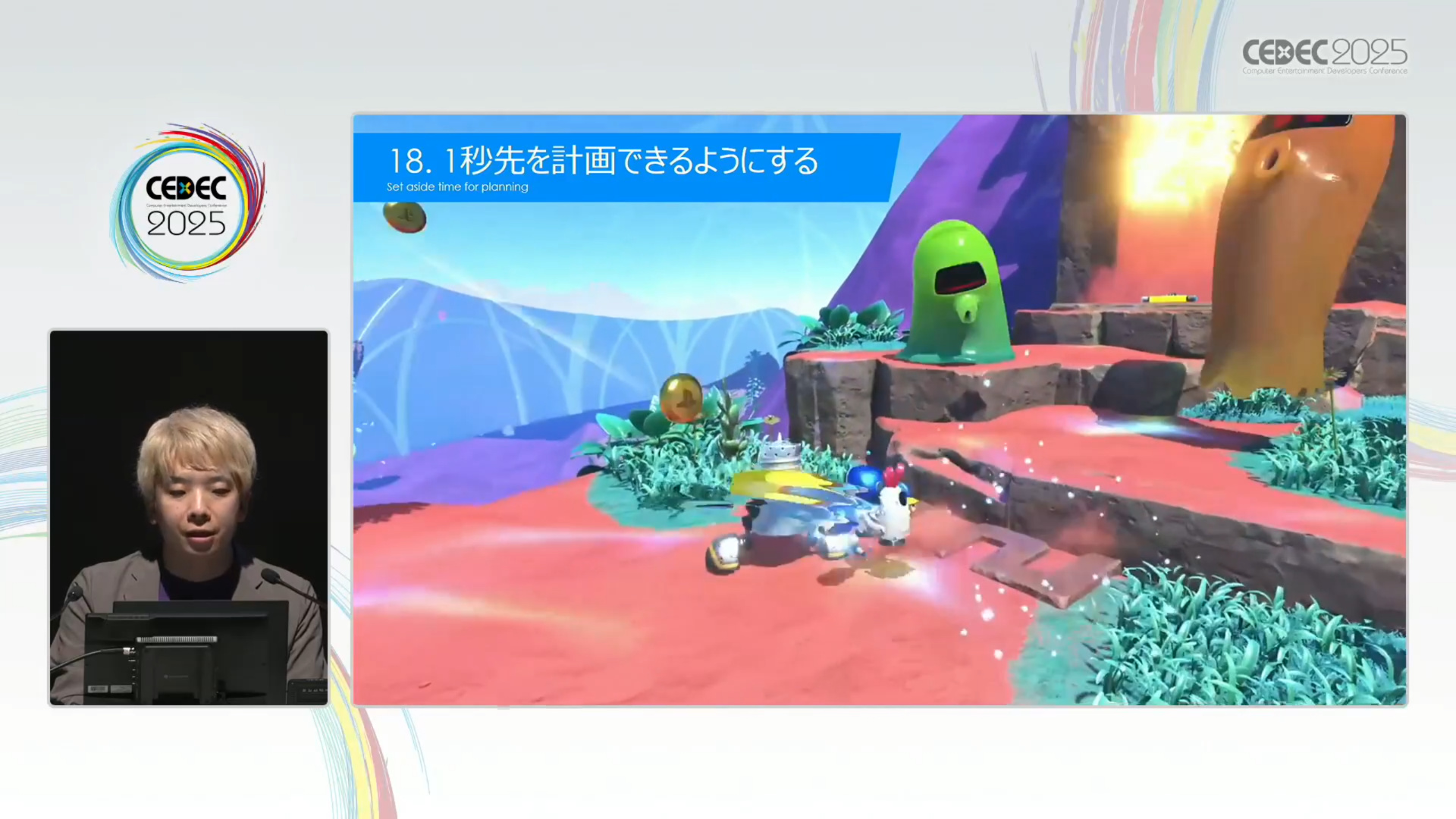
Stages that go up the screen tend to be difficult to deal with because you can't see ahead. I want to think carefully about whether the player is aware of the gimmick and has time to use it.

If the end is good, everything is fine. The impression at the end of the stage is important. "19. Excitement for the goal" is a method of "hospitality" that excites the mood with the experience of peaks and valleys just before the goal, and has them score a goal. It's also good to simply have them overcome boss battles.
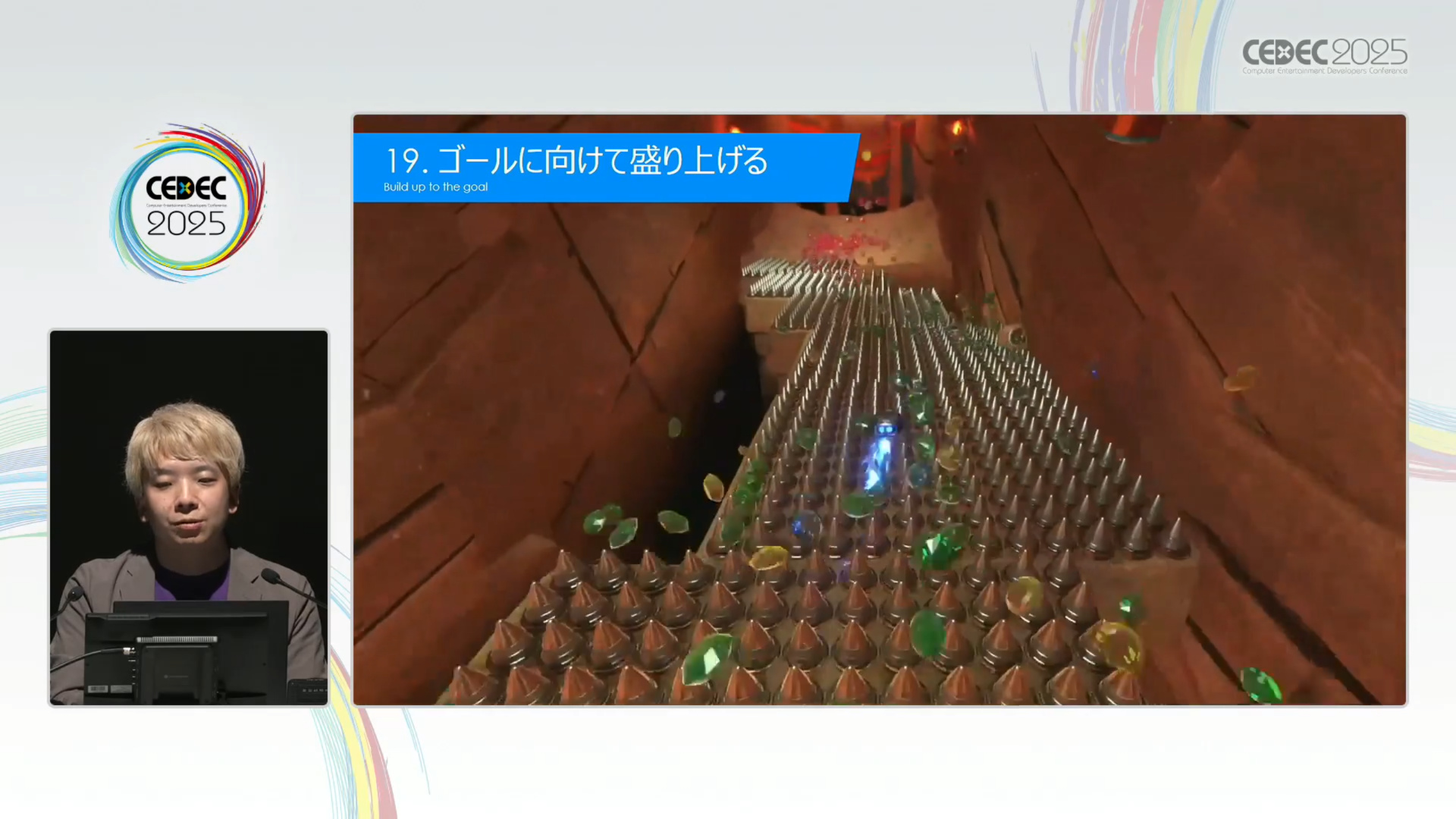
……After that, the points will continue up to 30, but I would like to conclude this article with Yatoku's last words, as I will wait for the detailed report to be published at a later date. That is, "it is important to recreate it many times to a state that players can enjoy." The staff gathers to play the stage they have created, summarizes the good and bad points, and brushes them up.
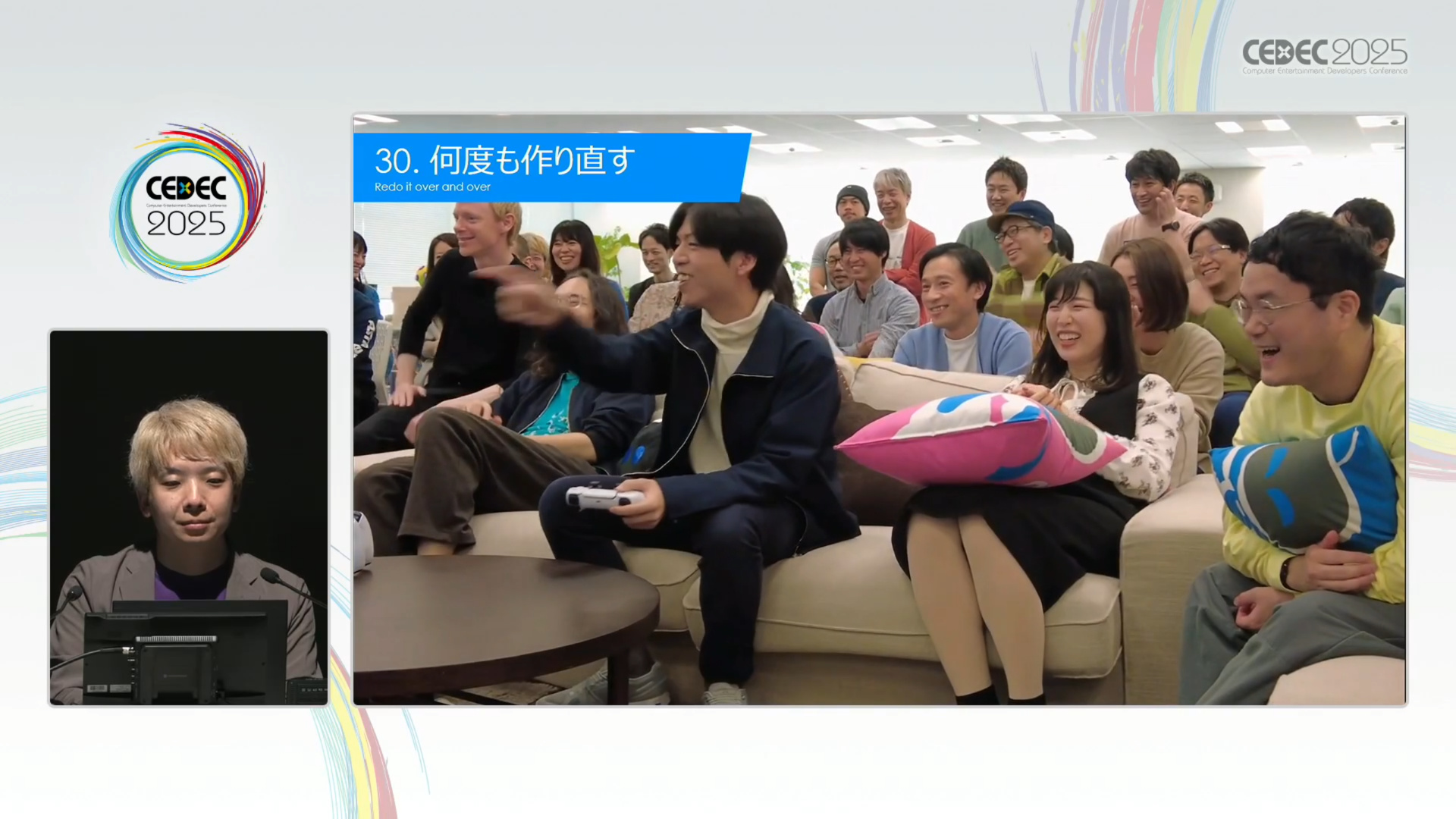
This was not limited to level design, but also the entire "Astro Bot", and Mr. Yatoku concluded this session.
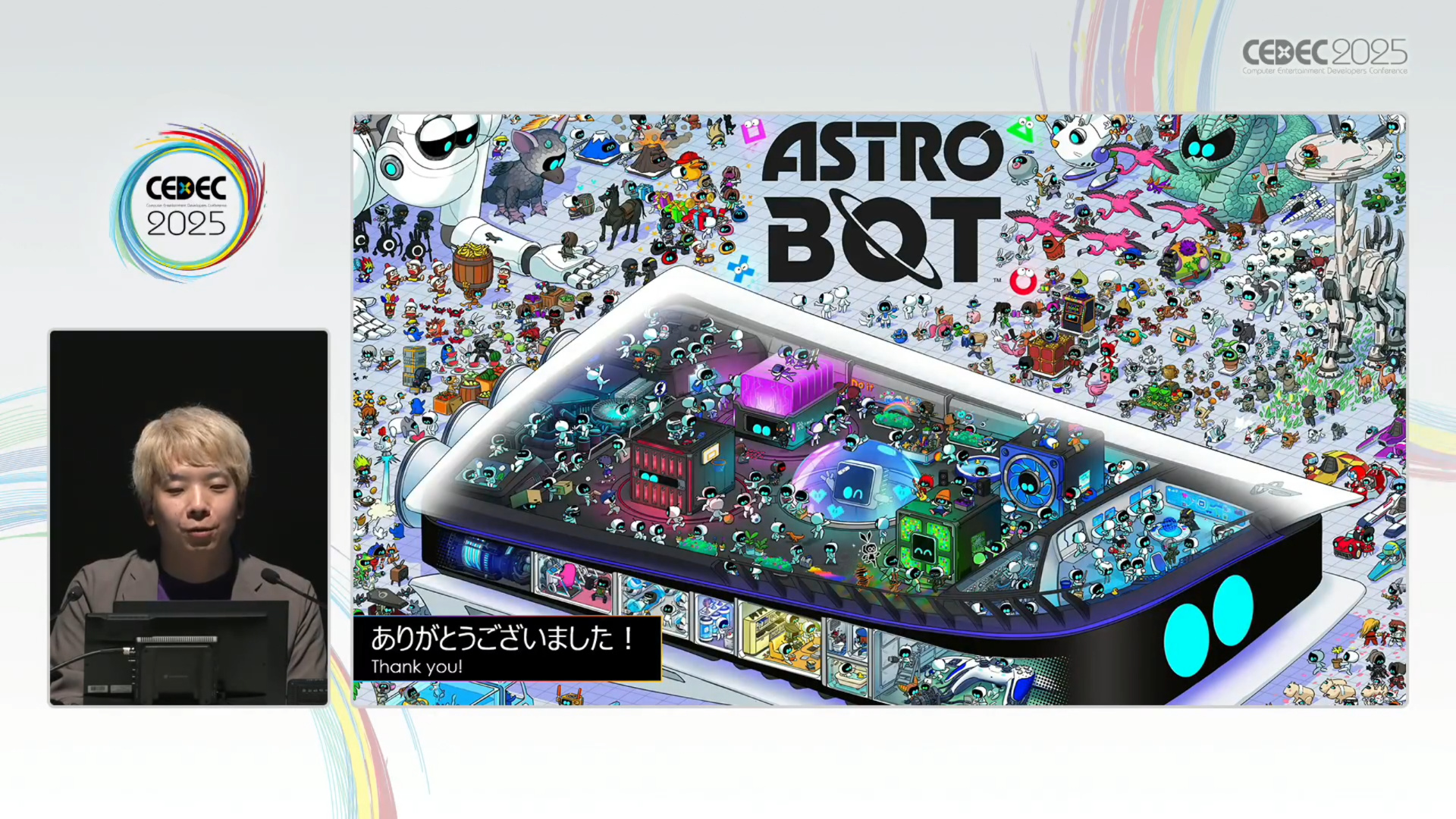

「アストロボット」のテンポよく遊べる3Dレベルデザインの秘訣。Team ASOBIはどのようにユーザー体験をデザインしたのか[CEDEC 2025]
CEDEC 2025の最終日,Team ASOBIのリードゲームデザイナーによる「アストロボット」のレベルデザインを解説するセッションが行われた。「わかりやすくて楽しくて驚きがあるゲーム」を実現した…
www.4gamer.net
Last edited:



